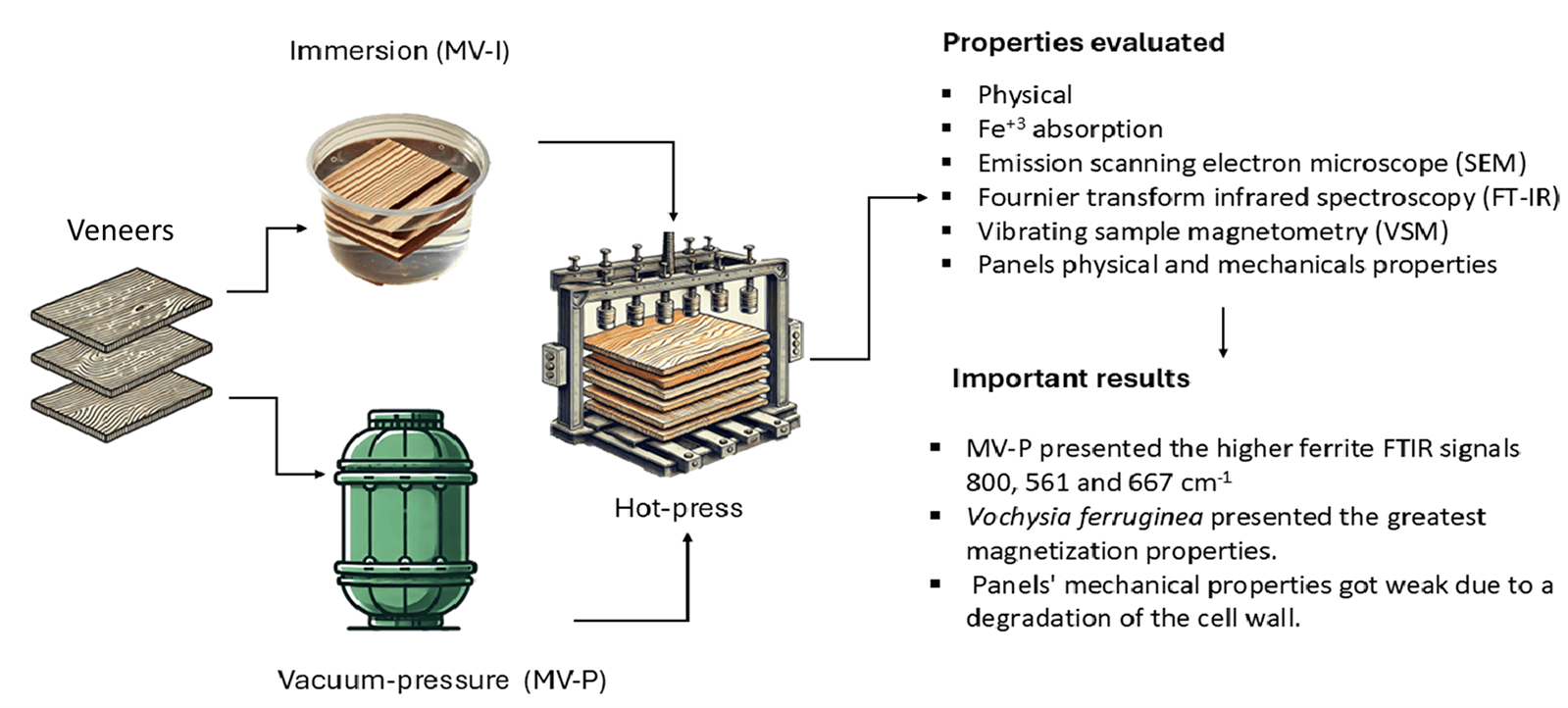 Open Access
Open Access
ARTICLE
Two Different Methods of Impregnation of Fe3O4 Nanoparticles in Wood Composites of Three Tropical Species in Costa Rica
1 Instituto Tecnológico de Costa Rica, Escuela de Ingeniería Forestal, Apartado, 159-7050, Cartago, Costa Rica
2 BCMaterials, Basque Center for Materials, Applications and Nanostructures, UPV/EHU Science Park, Leioa, 48940, Spain
3 Materials Science and Engineering Research Center (CICIMA), University of Costa Rica, San Pedro, 11501-2060, Costa Rica
4 School of Physics, University of Costa Rica, San Pedro, 11501-2060, Costa Rica
5 SINTEF Helgeland AS, Halvor Heyerdahls vei 33, Mo i Rana, 8626, Norway
* Corresponding Author: Róger Moya. Email:
(This article belongs to the Special Issue: Modification and Functionalization of Wood)
Journal of Renewable Materials 2025, 13(4), 799-816. https://doi.org/10.32604/jrm.2025.058755
Received 20 September 2024; Accepted 15 January 2025; Issue published 21 April 2025
Abstract
The impregnation of nanoparticles magnetified into wood had been developed by different methods, like surface chemical coprecipitation and vacuum-pressure coprecipitation of magnetic nanoparticles (NPs). However, there is a lack of information on the best method to coprecipitation NPs. Then, the present study has the objective to measure the effects of the impregnation process of wood veneers through two in situ processes (immersion and vacuum-pressure) using a solution of FeCl3·6H2O, FeCl2·4H2O and ammonia in three tropical species (Pinus oocarpa, Vochysia ferruginea and Vochysia guatemalensis). It was measured the degree of synthesis of iron NPs using weight and density gains, Fe+3 absorption, emission scanning electron microscope (SEM), Fournier transform infrared spectroscopy (FT-IR) and for magnetic properties were measured using vibrating sample magnetometry (VSM). After 5-layer veneer panels were fabricated, we evaluated their physical and mechanical properties. Wood samples impregnated by vacuum-pressure methods showed the higher amount of Fe3O4 NPs formation, which was observed in the SEM, X-ray diffraction (XDR), FT-IR and VSM. Vacuum-pressure on treatment presented higher ferrite signals and better magnetic properties. Vochysia ferruginea presented the greatest magnetization properties. The magnetization treated causes probably a degradation of the cell wall, which weakens its mechanical properties, especially internal bonding.Graphic Abstract

Keywords
Cite This Article
 Copyright © 2025 The Author(s). Published by Tech Science Press.
Copyright © 2025 The Author(s). Published by Tech Science Press.This work is licensed under a Creative Commons Attribution 4.0 International License , which permits unrestricted use, distribution, and reproduction in any medium, provided the original work is properly cited.


 Submit a Paper
Submit a Paper Propose a Special lssue
Propose a Special lssue View Full Text
View Full Text Download PDF
Download PDF Downloads
Downloads
 Citation Tools
Citation Tools